
Product test
Xiaomi 14T Pro review: back to that good ol’ value for money
by Jan Johannsen

A big photo sensor, cutting-edge hardware and a beautiful screen: at first glance, Xiaomi meets all expectations for its latest top-of-the-range smartphone. A second look reveals some weak points in terms of software and hardware usability.
Xiaomi makes a statement with the Xiaomi 13 Pro's large camera block: look, we've integrated a large sensor. The front-facing camera is no longer the centre of attention. Unfortunately, this is just one of the many points on which this high-end smartphone fails to convince me.
For the design, Xiaomi relies on uniform colours: the back of the 13 Pro shines in black or white. I can very well use my black test device as a mirror. Fingerprints are visible, but there are stronger 'magnets' among smartphones. The dominant feature is the square and relatively large photo block, including the written endorsement of partner Leica.
The back is made of a silicone polymer. In everyday language, this is a plastic. But a high-quality plastic. The Xiaomi 13 doesn't look cheap and doesn't feel that way to the touch. The front is covered in tough Gorilla Glass Victus. The entire casing is waterproof to IP68. This means it withstood 30 minutes of immersion testing in 1.5 metres of water without damage.
The fingerprint sensor under the screen is reliable and fast. The same goes for facial recognition.
With the Snapdragon 8 Gen 2, the Xiaomi 13 Pro has Qualcomm's most powerful smartphone chipset to date. It comes with twelve gigabytes of RAM. Compared with other smartphones with the same processor, however, the 13 Pro doesn't fare as well.
It's mainly in the single-core test and OpenCL GUI that the Xiaomi 13 Pro lags behind. On the other hand, when all the compute cores are called upon, the five smartphones are on a par.
On a day-to-day basis, the poor results were not felt by me. The user interface is fluid and applications start up quickly. For games, no restrictions are needed when it comes to graphics settings. Even if, according to Geekbench, the Snapdragon 8 Gen 2 doesn't perform optimally, it seems difficult to push the high-end processor to its limits.
Xiaomi promises to deliver three major Android updates for the 13 Pro, that's up to Android 16. Security updates for the smartphone are expected to be available for five years, so until early 2028.
Xiaomi is continuing its cooperation with Leica for the 13 Pro. This covers lenses, among other things, and is felt in the camera application. With "Leica Vibrant" and "Leica Authentic", there are two colour modes for shots, and for portraits you can choose between four focal lengths with different effects.
By default, the Xiaomi 13 Pro reduces the resolution of its images from 50 to 12.5 megapixels. When "pixel binning", it groups four pixels together. This technique increases light sensitivity and improves image quality. As a side-effect, photos take up less storage space. The 12.5 megapixels are enough to obtain a sharp image with very fine detail
When it comes to colour rendition, the 13 Pro offers two modes to choose from, to which Leica has contributed: Leica Vibrant and Leica Authentic. You have to choose one of the two, Vibrant being the preselection. This applies to all three rear lenses. In the following example, the colours with Authentic mode seem to me to be a little darker, especially towards the edges, and therefore brighter. Those in Vibrant mode are also very nice.
Left, photo: Leica Vibrant, right: Leica Authentic - Photos: Jan JohannsenIn portrait mode, you can choose four different focal lengths - 35, 50, 75 and 90 millimetres - which are partly fixed with effects. For example, at 35 millimetres, the photo is taken in black and white only. At 50 millimetres, a swirling bokeh effect is promoted. Compared with the other modes, I didn't notice much difference in the blur of the background. The soft focus function at 90 millimetres blurs the entire image. Who wants that?
The separation between the person in focus in the foreground and the blurred background works wonderfully. Without effects, portrait mode uses a focal length of around 50 millimetres.
The focal length of the ultra-wide-angle photo lens corresponds to 13 millimetres in small format. The software eliminates edge curvature well, and colours are intense and natural. Accuracy of detail is high, but in this example it is not sufficient to allow the blue painting on the historic building to be read properly. With the main lens, the text is sharp at a focal length of 23 millimetres.
The telephoto lens on the 13 Pro has a focal length of 75 millimetres in the small format. Compared to the main lens, this corresponds to a 3.2x optical zoom. Compared with the main lens, it brings you closer to the subject without any loss of quality. In the following example, the emphasis is on the houses in the centre of the image rather than those behind the railway track. Buildings further away are also a little pixelated with the main lens.
The camera app on the Xiaomi 13 Pro also features a 10x zoom. But unlike the Samsung Galaxy S23 Ultra, this one is digital and has obvious shortcomings in terms of detail accuracy. The maximum is a 70x zoom, which is unusable.
The Xiaomi 13 Pro allows you to disable automatic switching to night mode. However, this isn't really useful, as automatic mode produces very dark, pixelated images. On all three lenses, night mode brightens the image and increases sharpness considerably. For my subject, night mode causes the least change with the telephoto lens.
The 13 Pro's night mode brightens the image considerably. I hesitate to say whether I think it's already too bright for your night shot or not.
The Xiaomi 13 Pro records selfies at full resolution with 32 megapixels. They look great on the smartphone's screen. If I look at them more closely on a larger screen, I notice that they are pixelated. This is especially true of the background. It doesn't look like depth of field, it looks like pixel mush.
Even in the dark and with night mode active, the front-facing camera doesn't convince me.
The Xiaomi 13 Pro is a smartphone rightly regarded as a top-of-the-range model. However, that's not enough to place it at the top of the rankings.
Headline photo: Jan JohannsenWhen I was but a young student, I'd sit in my friend's living room with all my classmates and play on his SuperNES. Since then I've had the opportunity to test out all the newest technology for you. I've done reviews at Curved, Computer Bild and Netzwelt, and have now arrived at Galaxus.de.
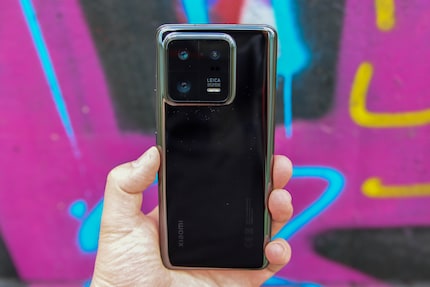
The Xiaomi 13 Pro features a 6.73-inch AMOLED display. This offers bright but natural colours as well as a nice dark black. The resolution of 3200 × 1440 pixels guarantees a detailed image. However, the default setting is Full HD+. This saves energy and is as sharp as ever. If you want a higher resolution, you need to select it in the settings. The maximum refresh rate reaches 120 hertz and the standard 1200 cd/m² brightness ensures I can see everything properly, even in direct sunlight.
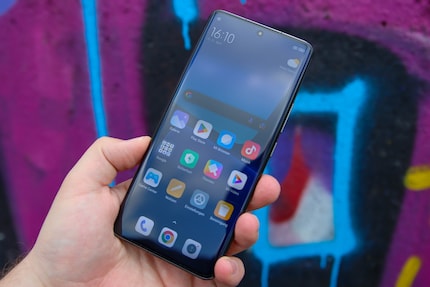
The Xiaomi 13 Pro comes with Android 13. The MIUI 14 user interface sits on top. I've criticised it before for its numerous bloatwares. When MIUI 14 was unveiled, Xiaomi said it wanted to install fewer third-party apps. Compared with the Xiaomi 12T, there are now just seven apps instead of 13 under 'More apps'. The number of pre-installed games has been reduced from three to one. Xiaomi is thus moving in the right direction, but I still find there are too many pre-installed apps that I don't need.
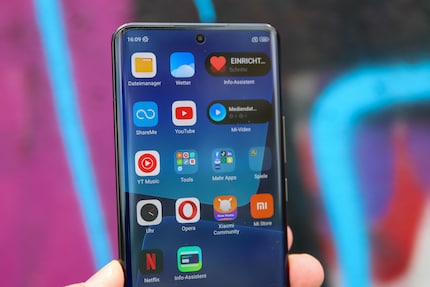
With a capacity of 4820 mAh, the Xiaomi 13 Pro's battery is among the smallest among high-end smartphones. I manage to get through the day without any problems with a usage time of four to five hours. What's more, the battery charges very quickly when needed. With the 120-watt power pack supplied, a full charge takes just 20 minutes. It's practical and impressive, but most of the time it's not necessary. Small drawback: with chargers from other manufacturers, the battery charges less quickly.
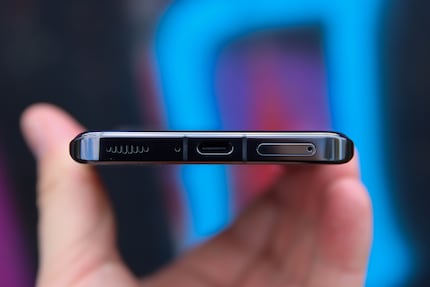
You can also charge the Xiaomi 13 Pro wirelessly at up to 50 watts. That's a lot for wireless charging. With a suitable charger, the battery is full in 36 minutes, according to Xiaomi. For its part, the 13 Pro can charge other devices wirelessly up to 10 watts. You'll need to enable this function in the settings to then be able to charge headphones on the go or help someone with a flat battery, for example, provided of course that the other devices support wireless charging themselves.
The 13 Pro is the first smartphone with a one-inch sensor to be sold by Xiaomi in Europe. The 12S Ultra was only officially released in China. The camera setup is completed by an ultra-wide-angle lens with a 115-degree angle of view and a telephoto lens that offers a 3.2x optical zoom. All the rear lenses have a resolution of 50 megapixels. The front camera has 32 megapixels for selfies.
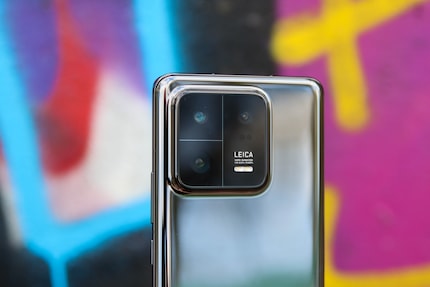


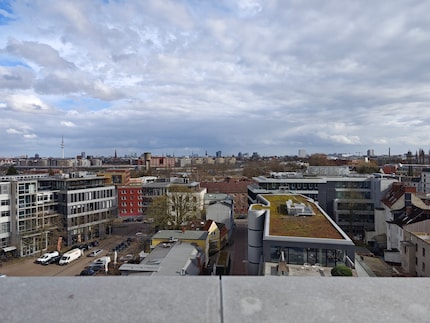

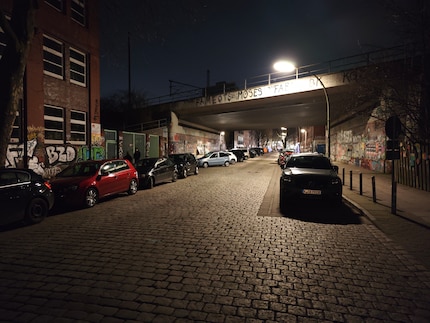
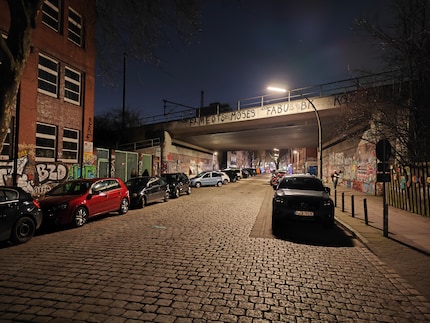


The screen on the Xiaomi 13 Pro is a feast for the eyes. The integrated high-end hardware doesn't quite live up to its performance, but it's still more than good enough. The average battery charges very quickly. The mediocrity of the front camera detracts from the very good photographic system. As far as software is concerned, Xiaomi is on the right track, but continues to annoy me with bloatware. It's a bit pitiful, but when I'm spending a four-figure sum on a smartphone, I want to be completely satisfied.
Against my darling of the moment, the Pixel 7 Pro, the Xiaomi doesn't stand a chance. I also see the Samsung Galaxy S23 Ultra ahead of the 13 Pro. Compared to the Motorola Edge 40 Pro, it's at the same level. Depending on the weighting of different features, they alternate in the assessment.